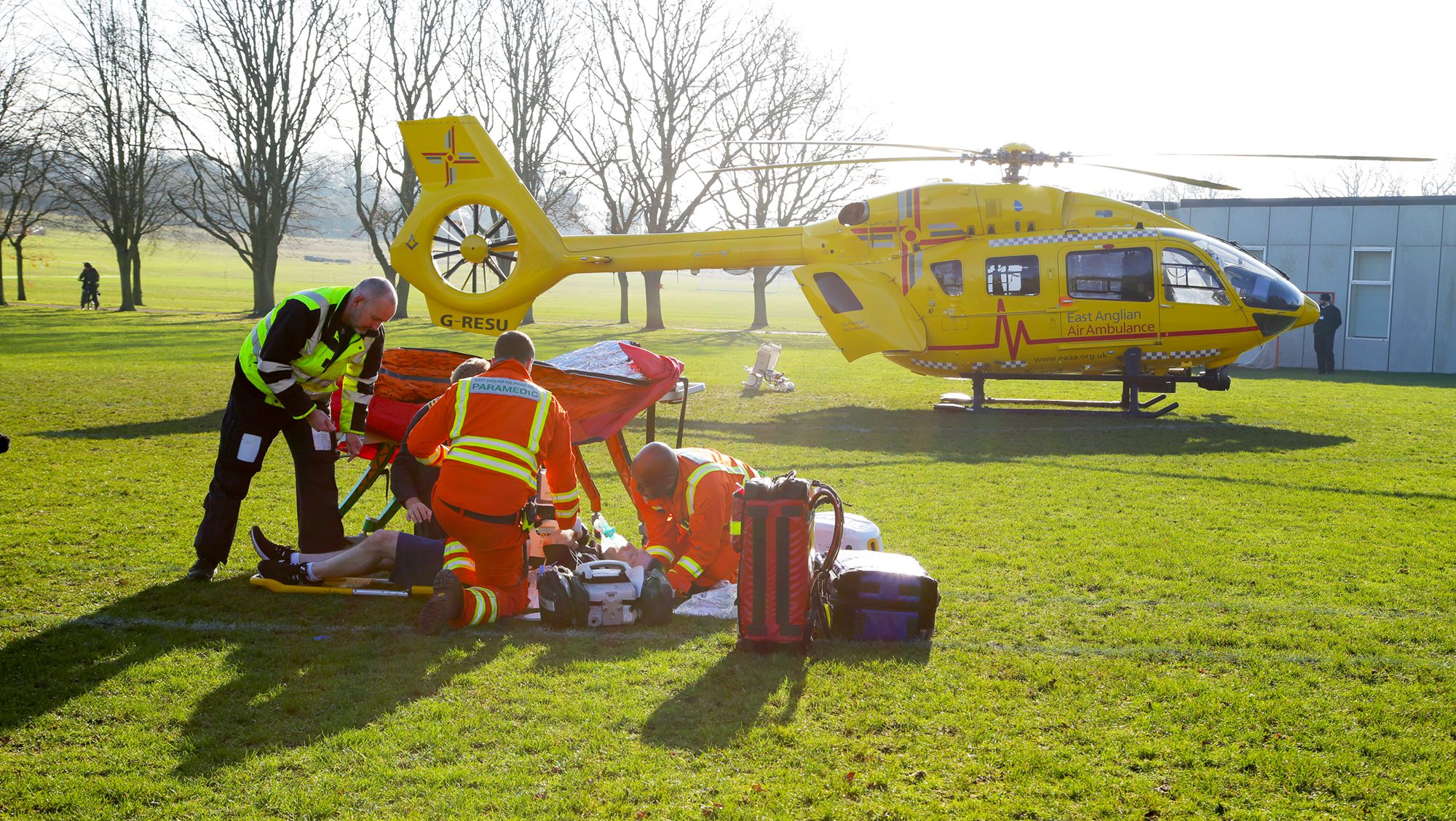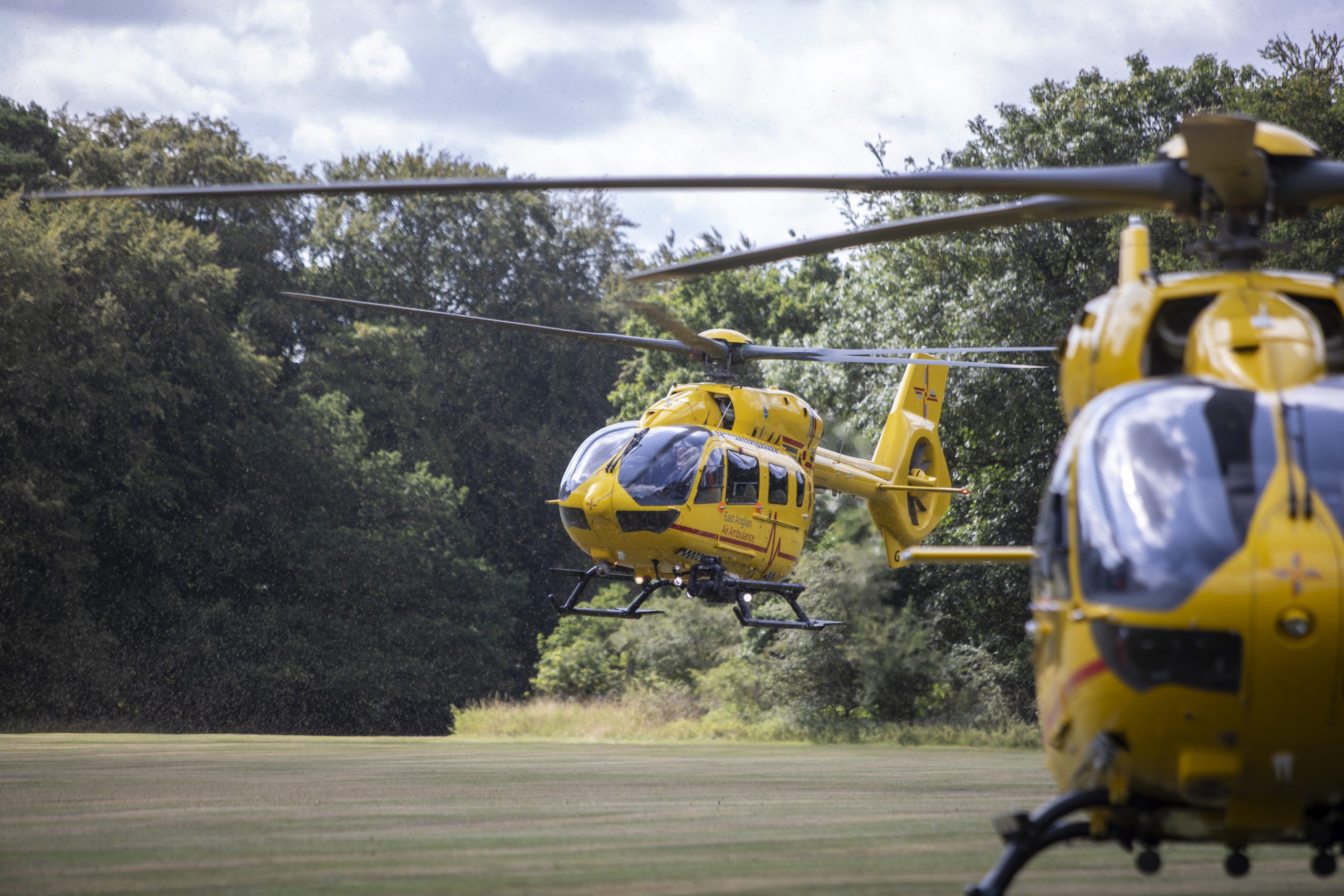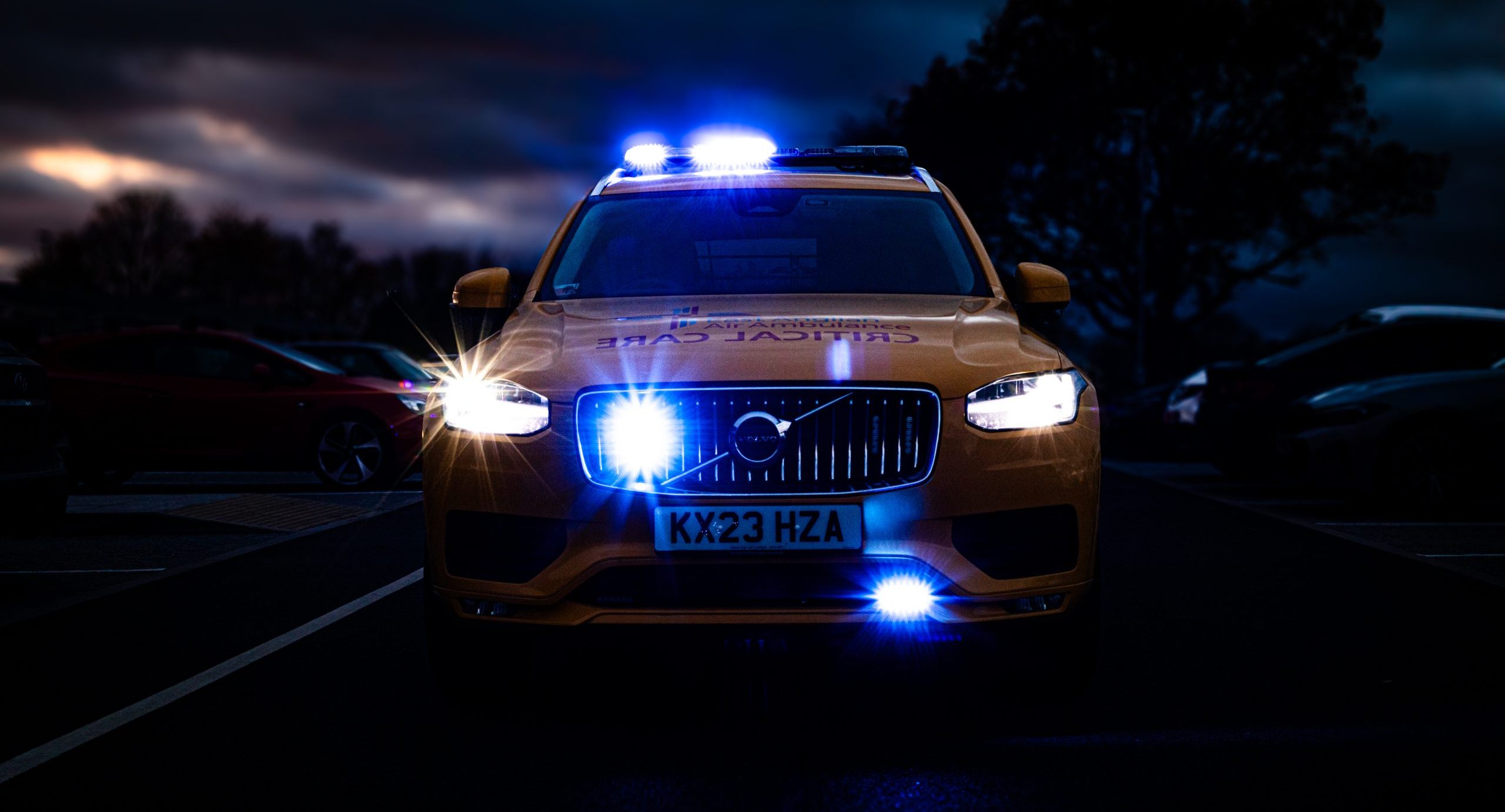How we are tasked
What happens when a 999 call is made to the ambulance service and a Helicopter Medical Emergency Service (HEMS) crew is required? Learn more about how EAAA is tasked with a look behind the scenes of how we work with the East of England Ambulance Service (EEAST) Critical Care Desk (CCD).
EAAA is tasked by the East of England Ambulance Service Trust (EEAST) Critical Care Desk (CCD) to support EEAST paramedics at life-threatening medical or trauma emergencies across the region. When tasked, the EAAA HEMS crew will bring the advanced skills, equipment and medicine (normally found in a hospital’s A&E department) directly to the scene of the emergency, ensuring the most seriously ill and injured people receive critical care as soon as possible.
When a 999-call is made, the caller goes through a question system with a call handler and an appropriate ambulance resource is sent in response.
There are different ways the EAAA crew could be tasked:
CCD monitoring and immediate dispatch
The Critical Care Desk (CCD) monitors all the jobs that come in. The CCD is in Norwich, Chelmsford and Bedford and is operated by clinicians (usually critical care paramedics) who work in HEMS organisations, including EAAA. They will be specifically looking for jobs where advanced out of hospital critical care teams may be needed and can have an impact on a patient’s chances of survival and recovery.
If the CCD clinician believes a Helicopter Emergency Medical Service (HEMS) response is needed, they will dispatch the nearest team and will provide more information to the crew as they receive it. Also on the CCD is a Dispatcher, whose job is to contact HEMS crews by telephone or radio and monitor and provide updates as appropriate.
If a call comes in and indications are that the ambulance service team might need more help, the CCD clinician might then ring the caller back and have a conversation about what’s happening at scene, while the land ambulance is on the way.
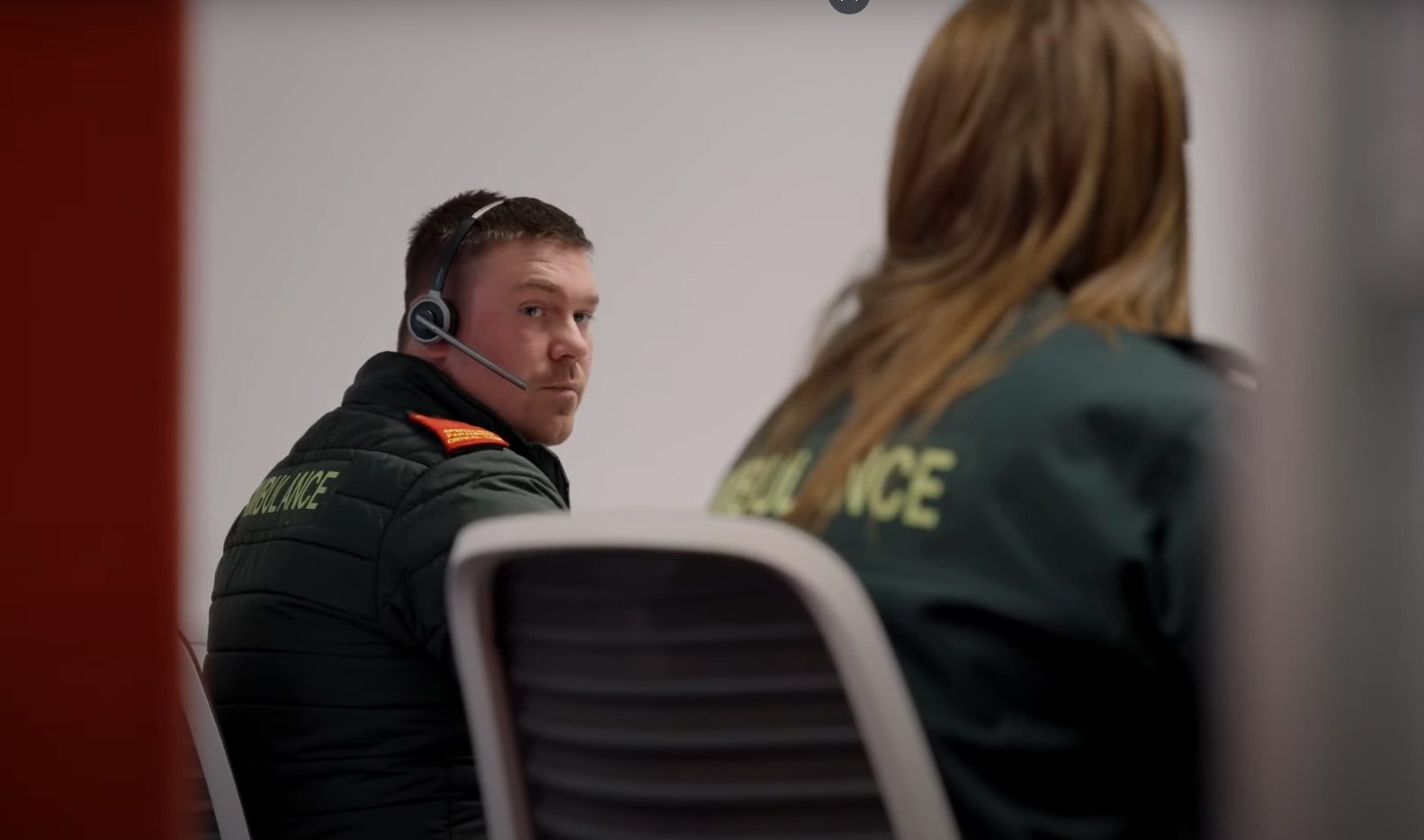
Automatic taskings
While the CCD has specific life-threatening tasks to look out for, such as out-of-hospital cardiac arrests, introduced more recently is automatic taskings.
Historical data about the types of emergencies that a HEMS crew would be tasked to is now used to automatically dispatch the crew to certain emergencies. This is due to the likelihood that their advanced critical care, equipment and medication will be required. Examples include to out-of-hospital cardiac arrests, and trauma incidents and medical emergencies where a patient would benefit from the enhanced care that a HEMS crew can bring to scene.
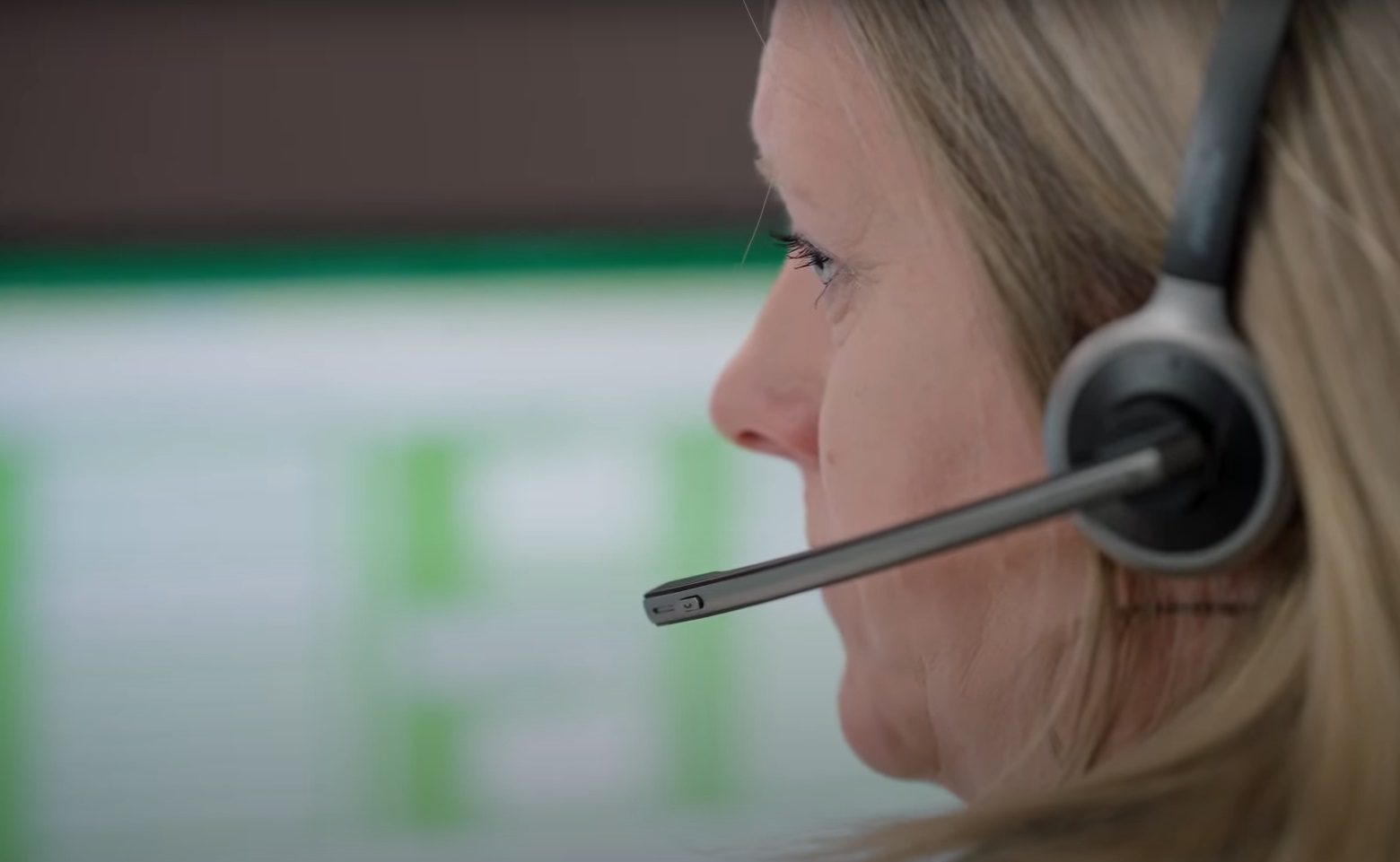
At the request of the land ambulance crew at scene
Often, it is our colleagues from the East of England Ambulance Service who are first on-scene. Following their assessment of the patient, they may request help from a HEMS crew to bring enhanced care to an especially unwell or injured patient. They will communicate with the CCD, who will then dispatch a HEMS crew to support the ambulance service.
We work closely with the ambulance service to support them in identifying patients, who may benefit from the advanced skills, equipment and medication a HEMS crew can bring to scene, at the earliest opportunity. Working in collaboration means patients can receive the best possible treatment and care during some of the worst moments of their lives.
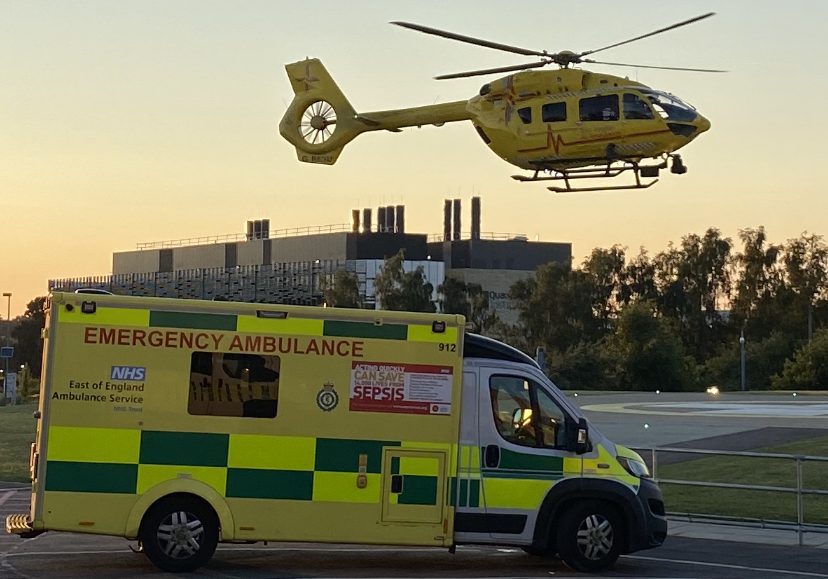
By air or by road?
The paramedic on shift will usually answer the phone call from the CCD, but the pilot will always be present with their iPad to check the grid reference and post code. This information gathering helps with the joint decision making as, immediately, the whole crew can see where scene is and can make a more informed choice about whether the crew should attend by air or road. Whether we go by Critical Care Car or helicopter, we carry the same high standard of medical monitoring and assessment equipment as the helicopters.
There are several factors which can determine this, including:
Weather: If the weather is out of limits for the helicopter, for example low cloud, snowfall or poor visibility.
Proximity to base: If the patient is located close to the base, the clinicians will likely travel by car as they can reach the patient in a faster time.
Incident type: If the incident type means that arriving by air wouldn’t be appropriate, then the crew may decide to travel by car.
If we are dispatched by road in a critical care car, it’s just our clinicians who attend, with the critical care paramedic driving the car. This enables the doctor on shift to continue planning for the medical emergency en-route. They still have the option to call the aircraft to scene to pick the patient up to transport to hospital if required.
By air or road, the CCD will continue to obtain and pass on information and updates to the HEMS crew while they are on the way to the task. This can include arranging points to pick up and transport to the scene if the safest landing site for the helicopter is a little further away. This could be a lift from the ambulance service or the police. This relies on the crew deciding on landing location and passing information to the CCD so these arrangements can be made.
